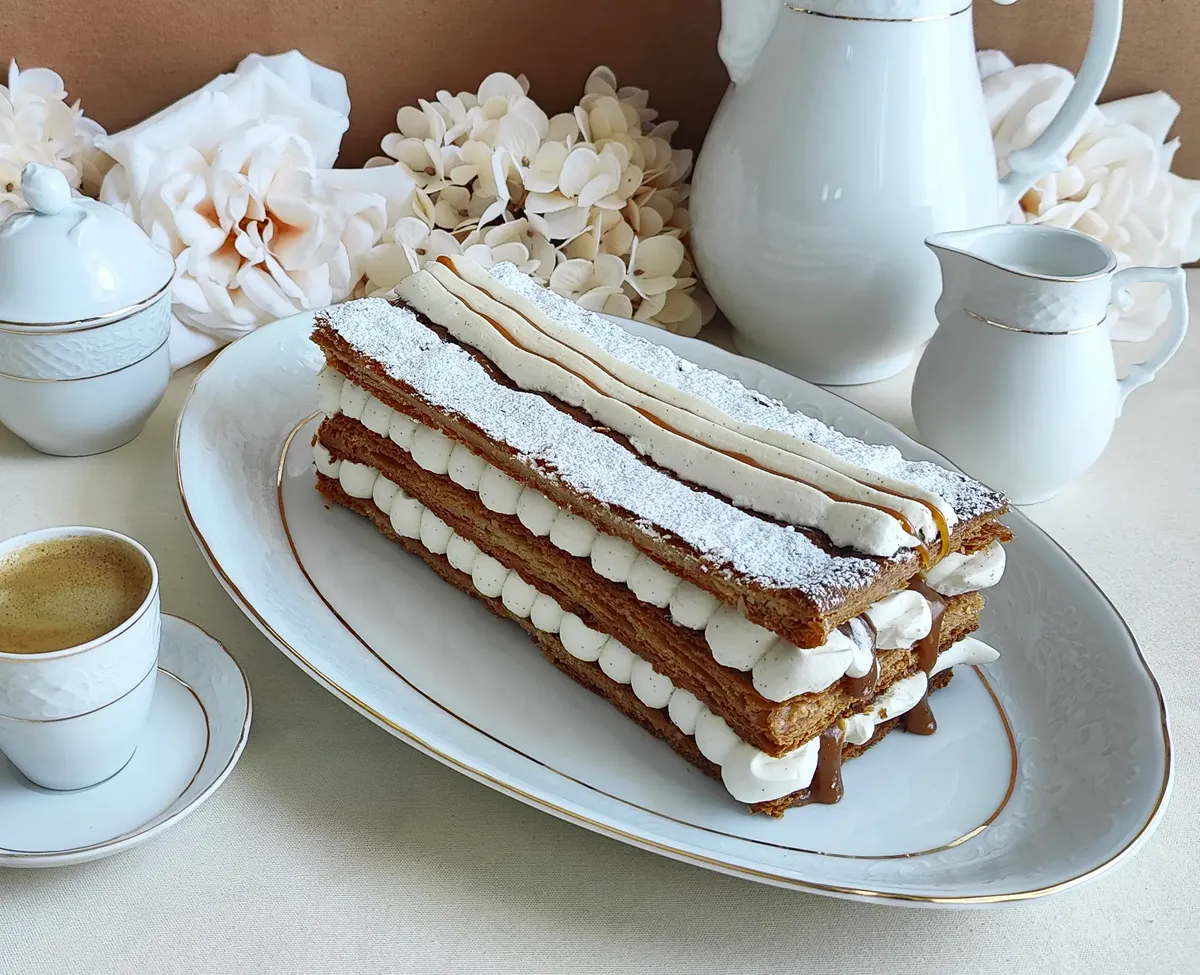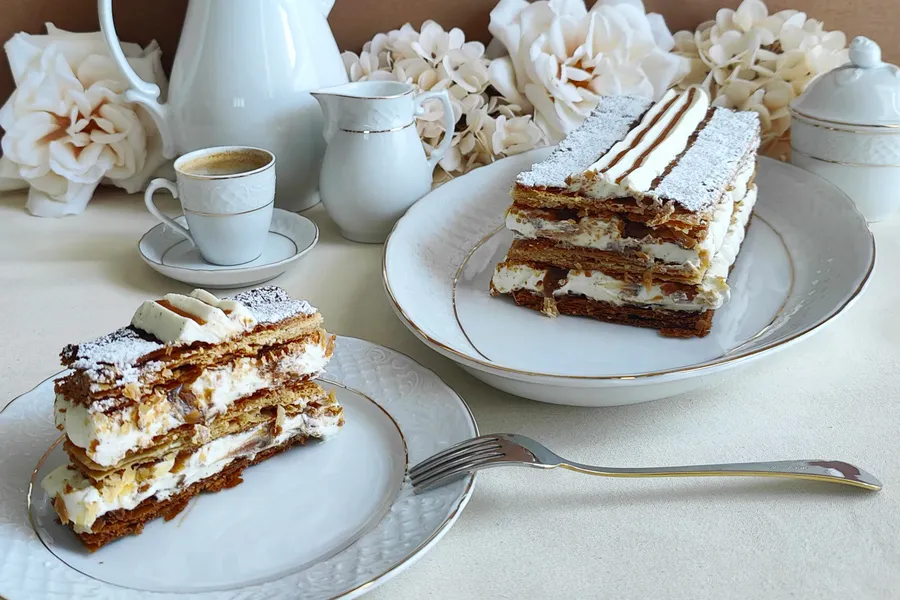
The history of Mille-feuille
The mille-feuille, also known as the Napoleon, is an icon of French pâtisserie with roots dating back to the 17th century. The first written reference appears in *Le Cuisinier François* (1651), a work by the cook François Pierre de La Varenne, one of the fathers of modern French cuisine. This cookbook includes puff pastry preparations, although at the time it was commonly paired with jams rather than creams. The puff pastry technique, partly inherited from Arab cuisine via Spain, was already known but still rudimentary.
In 1733, chef Vincent La Chapelle published *The Modern Cook*, which included a recipe explicitly naming the term *mille-feuille*. Written in English for an aristocratic British audience, this work helped spread the pastry beyond France. At that time, custard cream was not yet used, but the multi-layered structure characteristic of the modern mille-feuille was already recognised.
During the 19th century, the renowned chef and pastry chef Marie-Antoine Carême (1784–1833) perfected the puff pastry technique and standardised many French pastry preparations, including the mille-feuille. He is credited with introducing custard cream as the classic filling between puff pastry layers—an innovation that defined the pastry as we know it today. Carême also pioneered the use of marbled icing on the top layer, a technique still popular in modern pâtisseries.
In 1867, pastry chef Adolphe Seugnot, who had a workshop at 28 rue du Bac in Paris, made the mille-feuille his speciality. Though not its creator, he helped establish its popularity in the French capital, to the point where some culinary historians consider him the first major commercial promoter of the pastry. Since then, the mille-feuille has become a staple of French pâtisserie.
The term mille-feuille literally means “a thousand leaves” in French, referring to the many thin layers of pastry that make up the dessert. Traditionally, the cake consists of three layers of baked puff pastry and two layers of pastry cream, although modern variations may include additional layers, glazes, fruit, or even chocolate. Its preparation requires technical precision, as the puff pastry must remain crisp and light while retaining its structure over time.
Over the centuries, the mille-feuille has transcended its French origins to become a globally recognised dessert. In Central Europe, similar versions can be found in Austria, Hungary, and Poland, while in North America, Asia, and Oceania it is commonly offered in French-style patisseries. In Latin America, countries such as Argentina, Mexico, Colombia, and Chile have developed their own interpretations, often incorporating dulce de leche, meringue, or whipped cream, while preserving the signature layered structure. This worldwide adaptation has helped sustain the legacy of one of the most refined and versatile cakes in classic pâtisserie.

 albertoimizcoz
albertoimizcoz

